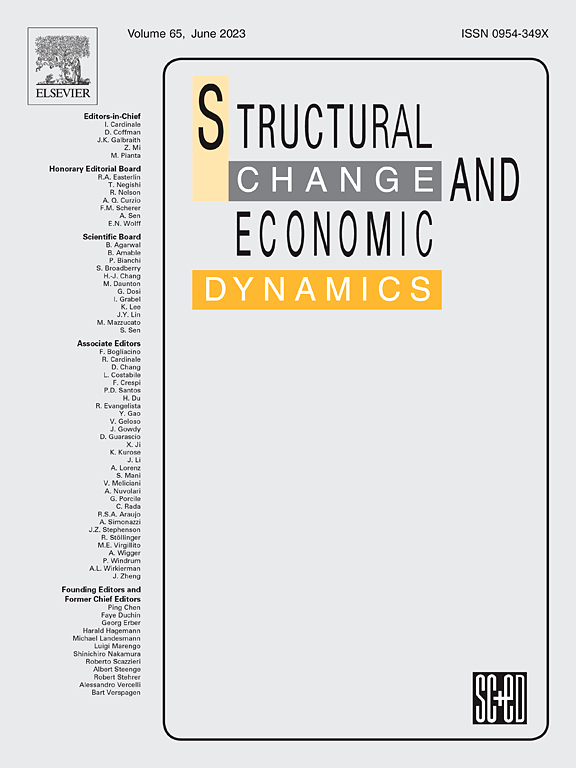荷兰病的中间投入物。智利的铜矿
IF 5
2区 经济学
Q1 ECONOMICS
引用次数: 0
摘要
目的:通过一个实用的模型,本文讨论了中间投入在蓬勃发展的采掘部门从落后部门汲取资源的能力中的作用,从而产生了荷兰病。方法该模型适用于智利经济,并遵循“扩展的”投入产出结构,包含35个生产部门。模型经过校正和参数化后,可以进行数值求解,以估计铜井架的资源移动效应和消耗效应。结果:数值计算表明,当考虑到中间投入的使用时,在解释荷兰病的去工业化方面,资源流动效应与支出效应具有相似的程度。这里的关键机制是,当铜行业扩张时,由于使用了中间投入,它对实际工资和商品价格的影响可能是巨大的。这意味着,通常建议的避免荷兰病的政策(财政规则、主权财富基金等)如果没有旨在促进更多提供或有效利用稀缺资源的其他政策配合,可能不会非常有效。本研究对荷兰病的文献有两方面的贡献。一方面,它提供了对资源流动效应和商品繁荣的消费效应的估计。另一方面,它提供了支持采掘活动可导致直接去工业化的假设的证据。本文章由计算机程序翻译,如有差异,请以英文原文为准。
Intermediate inputs in Dutch disease. Copper in Chile
Purpose
By means of a practical model, the paper discusses the role of intermediate inputs in the ability of a booming extractive sector to draw resources out of lagging sectors, giving rise to Dutch disease.
Methods
The model is for the Chilean economy and follows an ‘extended’ input-output structure, with 35 production sectors. Once calibrated and parameterized, the model can be solved numerically to estimate the resource movement effect and the spending effect of a copper boom.
Findings
The numerical exercises show that, when the use of intermediate inputs is taken into account, the resource movement effect is of similar magnitude to the spending effect in explaining deindustrialization in Dutch disease. The key mechanism here is that, when the copper sector expands, its effects on real wages and good prices can be significant, due to the use of intermediate inputs.
Implication
This implies that the policies that are commonly recommended to avoid Dutch disease (fiscal rules, sovereign wealth funds, etc.) may not be very effective if they are not accompanied by others aimed at promoting greater provision or efficient use of scarce resources.
Originality
The present study contributes to the literature on Dutch disease in two ways. On the one hand, it provides an estimate of the resource movement effect and the spending effect of a commodity boom. On the other hand, it provides evidence in favour of the hypothesis that extractive activities can lead to direct deindustrialization.
求助全文
通过发布文献求助,成功后即可免费获取论文全文。
去求助
来源期刊

Structural Change and Economic Dynamics
ECONOMICS-
CiteScore
9.60
自引率
4.90%
发文量
159
期刊介绍:
Structural Change and Economic Dynamics publishes articles about theoretical, applied and methodological aspects of structural change in economic systems. The journal publishes work analysing dynamics and structural breaks in economic, technological, behavioural and institutional patterns.
 求助内容:
求助内容: 应助结果提醒方式:
应助结果提醒方式:


